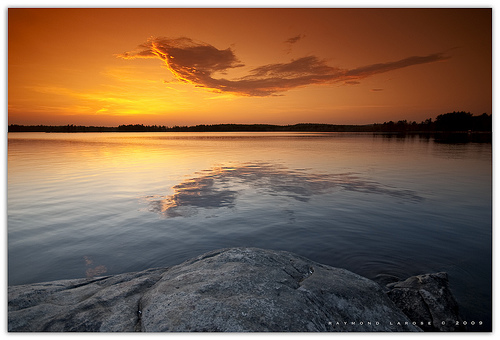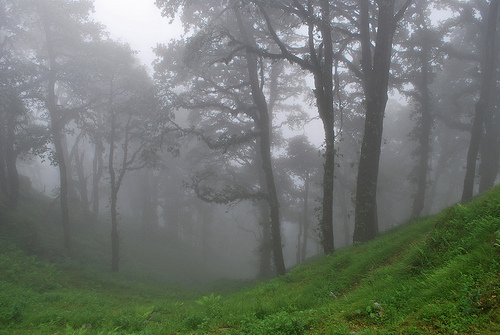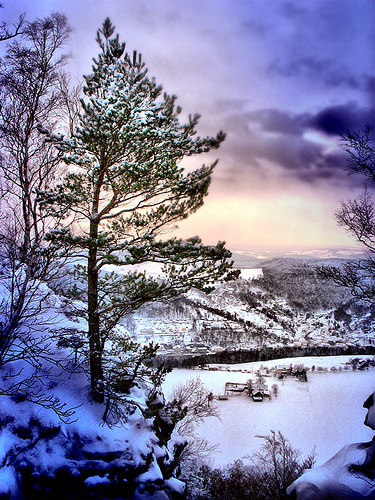Landscapes are among the most stunning and eye-catching examples of photographic prowess; unfortunately, landscapes can also make amateurs emphatically stand out.
By learning to identify the elements that go into a jaw-dropping display of nature’s wonders when captured by a skilled photographer, even the most novice wielders of cameras can capture examples of amazing landscape photography, while also gaining a deeper appreciation of the skill of masters. These elements come into play for basic observation as well as before, during, and after taking a landscape picture.
Developing an Eye for Landscape Photography
Recognizing the elements of successful landscape photos does not require having a camera at the ready. Any idle moment of gazing around can be an opportunity for practicing composition skills, and those photographers who make a habit of never being far from a camera can find surprising opportunities for excellent pictures this way.
The vital things to look for are:
- light quality
- the elements that would be present in the frame
- any potential focal points
- the presence of both a foreground and background for a shot; and,
- the shape and textures of the elements.
Unsuccessful landscape pictures most commonly look flat or uninspiring because they lack something in the foreground, don’t pay attention to a balanced composition, or are taken in the wrong quality of light. If you learn what to look for in the best photographs, as well as recognize the shortcomings of those that leave the viewer unaffected, you will develop the ability to capture awe-inspiring images.
While some of those elements will become things that an experienced photographer absorbs reflexively when surveying potential shots, beginners will find a few particular guidelines handy. One of these is composing a shot using the Rule of Thirds, which is among the first lessons taught to most new photography enthusiasts. By mentally dividing a frame into thirds both horizontally and vertically, thus creating a grid of nine squares, and placing major elements of a shot such as the horizon or focal points along those lines, a photographer can create a balanced image. In addition, special care should be made to have an element in the foreground to draw the eye further into the image and the background which is usually the most dramatic element. The foreground need not be dazzling, simply present, to add depth and balance for amazing images of landscapes.
This image follows the rule of thirds, utilizes a jut of rock in the foreground to contrast with the play of color, light, and motion in the water, and places the horizon and glowing sky in the upper third.

Successfully Capturing Stunning Landscapes
Once identifying and composing the elements of a landscape becomes second nature, a photographer’s focus can be placed upon the actual process of capturing the landscape picture to its fullest potential. After finding the desired elements and vista, and experimenting with angles and vantages to find just the right spot, a successful photo depends on the light. Ideal light for photography comes twice a day, in the morning and in the evening, when the sun’s light passes through more of the atmosphere and is thus softened. When weather itself becomes one of the elements of a photograph, such as landscapes made mysterious by shrouding mist or dramatic by racing storm clouds, this rule is of course less important.
The shape of the land and the fog create the compelling atmosphere of this dreamy landscape.

The technical aspects of landscape photography are one of the least challenging parts, although still important. Most landscape images are taken with a lens that is ultra wide angle, although the occasional experiment with a telephoto lens can have surprising and pleasing results. The depth of field is of vital importance, created with a small aperture and slower shutter speed. When motion is one of the prominent elements in the frame, try an aperture that is smaller still, or an applicable filter, along with even longer shutter speeds. These slower shots, of course, mean that any shake or unsteadiness in the hands can have catastrophic results, so a tripod of some sort will help. For a particularly bright sky or darker landscape features, a graduated filter can prevent problems with exposure.
With proper planning and an eye for details, little work needs to go into landscape pictures in the post-processing stage, unless the photographer wishes to utilize high dynamic range or HDR for the final result. This produces landscapes with intense contrasts in shadow and light and particularly vivid colors by snapping three photographs of the same scene at differing shutter speeds, resulting in dark, medium, and bright photos that are then combined using computer software. Some photography purists prefer to avoid post-processing altogether, but the final product can be a truly awesome display of nature that is closer to what the human eye actually sees.
A well-composed example of an HDR landscape, this forest’s sharp display of snow and shadow are balanced with the soft, hazy hues of the sky.

Did you like this article or find it helpful? Please share it!